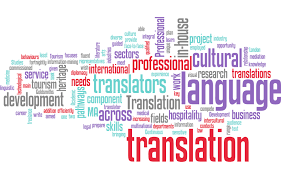In today’s interconnected world, effective communication across languages and borders has become increasingly crucial for businesses, organizations, and individuals alike. As the global marketplace continues to expand, the need for accurate and reliable document translation services has never been more pronounced. Whether you’re navigating international contracts, localizing marketing materials, or translating important legal documents, the ability to bridge linguistic barriers can unlock a world of opportunities.
Document translation plays a vital role in facilitating cross-cultural understanding, enabling seamless collaboration, and ensuring compliance with local regulations. By providing accurate and culturally-appropriate translations, you can effectively communicate with your global partners, customers, and stakeholders, fostering stronger relationships and unlocking new avenues for growth.
Understanding the challenges of document translation
While the benefits of document translation are clear, the process itself can be fraught with challenges. Accurate translation requires not only linguistic expertise but also a deep understanding of cultural nuances, industry-specific terminology, and regulatory requirements. Failing to address these complexities can result in costly mistakes, miscommunications, and even legal issues.
One of the primary challenges in document translation is achieving the right balance between linguistic precision and cultural appropriateness. Literal translations may fail to capture the intended meaning or may even convey unintended messages, undermining the effectiveness of the communication. Experienced translators must possess the skills to navigate these delicate linguistic and cultural landscapes, ensuring that the translated content resonates with the target audience.
Types of document translation services
When it comes to document translation, there are several different service options available, each with its own strengths and considerations. Understanding the various types of document translation services can help you make an informed decision that aligns with your specific needs and budget.
1. Professional Human Translation:
This traditional approach involves the use of skilled, native-speaking translators who meticulously translate your documents by hand. Professional human translation is often considered the gold standard for accuracy and quality, as it relies on the linguistic expertise and cultural understanding of experienced translators. However, this service can be more expensive and may have longer turnaround times compared to other options.
2. Machine Translation with Human Editing:
Advancements in artificial intelligence and natural language processing have given rise to machine translation services, which use sophisticated algorithms to automatically translate documents. While machine translation can be a cost-effective and efficient solution, it may not always capture the nuances and contextual complexities of the original text. To ensure quality, many organizations opt for a hybrid approach, combining machine translation with human editing and proofreading.
3. Crowdsourced Translation:
Some document translation services leverage the power of a global network of freelance translators to tackle large-volume or time-sensitive projects. This crowdsourced approach can be a more affordable option, but it may come with concerns about quality control and consistency, as the translations are provided by a diverse pool of individuals with varying levels of expertise.
4. Specialized Translation Services:
Certain document translation providers offer specialized services tailored to specific industries or document types, such as legal, medical, or technical translations. These specialized services often employ translators with deep expertise in the relevant field, ensuring that your documents are translated with the appropriate terminology, formatting, and regulatory considerations.
When choosing a document translation service, it’s essential to carefully evaluate your needs, budget, and the complexity of the documents you require translated. By understanding the various service options available, you can make an informed decision that maximizes the quality, efficiency, and cost-effectiveness of your document translation efforts.
The role of technology in document translation
In the digital age, technology has become an integral part of the document translation landscape, revolutionizing the way we approach this critical process. From automated translation tools to cloud-based collaboration platforms, technological advancements have transformed the way businesses and organizations manage their multilingual communication needs.
1. Machine Learning and Artificial Intelligence:
The rapid development of machine learning and artificial intelligence (AI) has significantly improved the accuracy and efficiency of automated translation services. These advanced technologies analyze vast amounts of data, identify patterns, and apply contextual understanding to generate high-quality translations that closely approximate human-level proficiency. As these AI-powered tools continue to evolve, they are becoming increasingly valuable for handling large-scale, time-sensitive translation projects.
2. Cloud-based Collaboration Platforms:
Cloud-based translation management systems and collaboration platforms have revolutionized the way teams work together on multilingual projects. These tools enable seamless file sharing, real-time communication, and centralized project management, allowing translators, editors, and subject matter experts to collaborate effectively, regardless of their geographic location. By streamlining the translation workflow, these platforms can enhance productivity, improve quality control, and ensure version control across multiple languages.
3. Integrated Translation Workflows:
Many document translation service providers now offer integrated technology solutions that seamlessly incorporate various translation tools and processes into a single, cohesive platform. These end-to-end solutions often include features like translation memory, terminology management, and automated quality assurance checks, enabling organizations to manage their entire translation lifecycle from a single, user-friendly interface.
Conclusion
In today’s globalized world, the ability to effectively translate documents across languages and cultures is a critical success factor for businesses, organizations, and individuals alike. Whether you’re navigating international contracts, localizing marketing materials, or translating important legal documents, choosing the right document translation service can unlock a world of opportunities and ensure clear, consistent communication with your global stakeholders.





